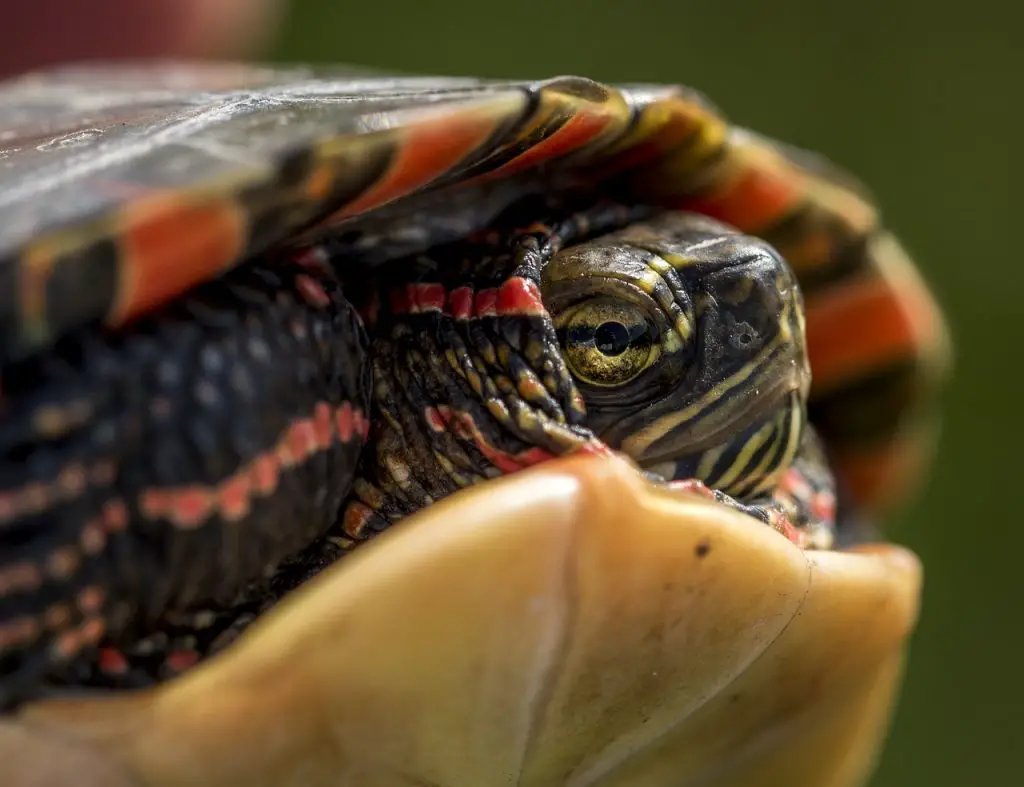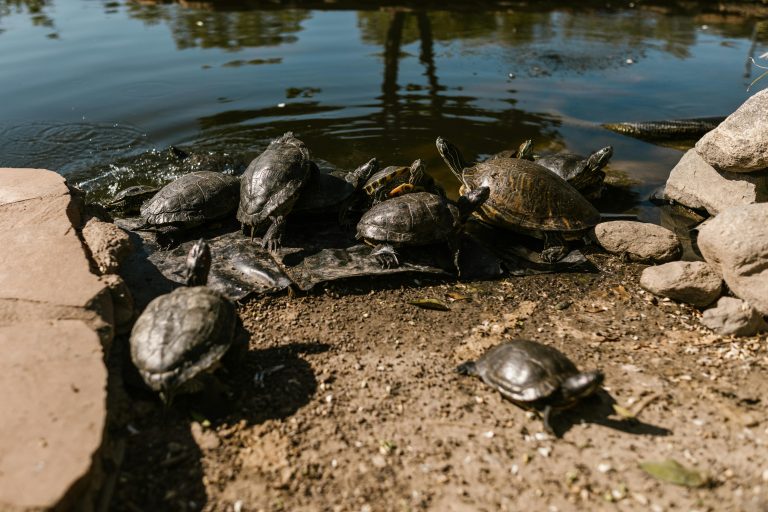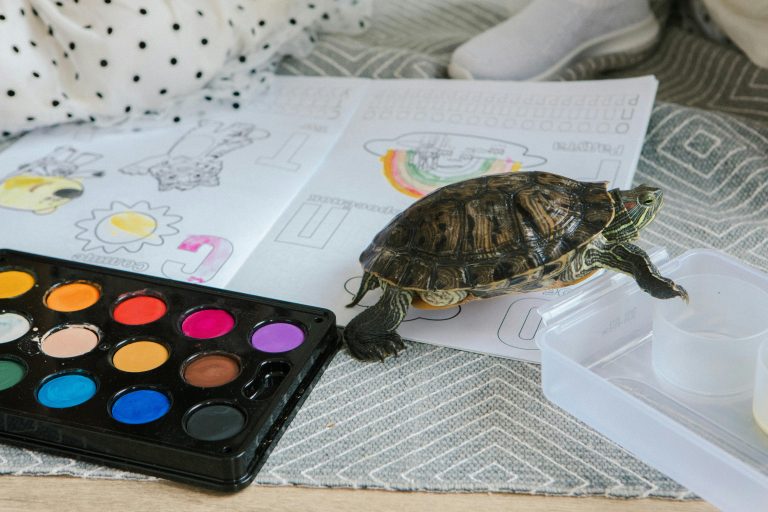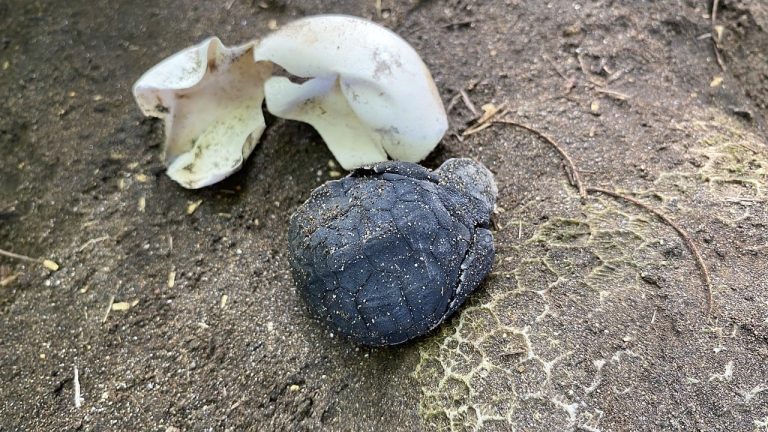How To Preserve A Turtle’s Shell?
Saying goodbye to a cherished pet can be an emotionally trying experience. But when it comes to turtles, there’s a unique opportunity to preserve their shells as meaningful keepsakes. Not only do these shells serve a practical purpose, but they can also add a touch of beauty to any space as decorative accents. Whether you’re driven by sentimentality or practicality, the process of preserving a turtle shell is relatively simple and ensures that this precious artifact remains in impeccable condition for years to come.
Preserving an aging turtle shell involves a few key steps. First, the shell can be buried until it naturally decomposes, followed by a thorough cleaning with a mixture of borax and seawater or by boiling to eliminate any bacteria. To prevent the shell from flaking, it’s essential to apply a solution of vinegar and polyurethane.
This age-old practice has been utilized by humans for centuries, each culture finding its own unique reasons for doing so. In ancient China, turtle shells were revered for their supposed medicinal properties, while in other parts of the ancient world, they were fashioned into ornaments, components for bows, and even musical instruments.
Fast forward to the twenty-first century, and designers are now seeking intact turtle shells to incorporate into modern home decor. However, for many of us who have cared for turtles as beloved pets, preserving their shells serves as a poignant reminder of their presence in our lives. So, without further delay, let’s delve into the fundamentals of maintaining a turtle’s shell in optimal condition.

What Materials Will You Need?
Before diving into the process of preserving a turtle shell, it’s essential to gather the necessary essentials. Without these items, you won’t be able to begin the preservation journey:
- Gloves for Cleaning: Protect your hands with gloves to ensure safe handling during the cleaning process.
- Toothbrush: A toothbrush will come in handy for gently scrubbing and cleaning the turtle shell.
- Rub Alcohol or Vinegar: These substances are useful for disinfecting and removing any lingering bacteria from the shell.
- Borax: Borax is a key ingredient for soaking the shell, aiding in the preservation process.
- Salt: Salt can be utilized as part of the cleaning and preservation procedure.
- Glue: Depending on the condition of the shell, you may need either school glue or super glue to reattach any loose scutes.
- Varnish or Polyurethane: To protect the shell and give it a glossy finish, varnish or polyurethane is essential.
- Insertable Felt Pads: These pads will help prevent scratching and damage when displaying the preserved shell.
Gathering these essentials ensures that you’re fully equipped to undertake the task of preserving a turtle shell effectively.
The Process Of Decomposition
Preserving a turtle shell isn’t a task to rush through; it’s a gradual process that unfolds over several months, not just days or weeks. If your beloved turtle has recently passed away, the first step is to allow nature to take its course by burying the turtle.
Before burial, it’s advisable to cover the turtle in plastic, making sure to create a few openings for worms and flies. This precaution helps prevent the scutes from falling off during decomposition. However, please exercise patience as decomposition is a slow process. It typically takes anywhere from three months to a year for a turtle shell to decompose entirely.
While waiting for decomposition to occur, it’s important not to let the shell sit exposed to the elements for too long, as weather and soil conditions can affect the preservation process.
During the waiting period, it’s recommended to check on the turtle shell regularly, about once a week or every two weeks. Look for signs that the tissue has dissolved, which can be observed by examining the turtle’s limbs. As decomposition progresses, you’ll notice distinct phases:
- Fresh Phase: This phase begins when the turtle’s heart stops functioning. Limbs may become stiff, and a slight unpleasant odor may be present.
- Bloat Phase: During this phase, the deceased turtle’s body begins to bloat, emitting a strong, unpleasant odor.
- Active Decay Phase: Skin starts to flake off, revealing the skeleton underneath. Maggots and other creatures may begin to feed on the flesh, accelerating the decomposition process, especially in warmer weather.
- Advanced Decay Phase: Once the catalysts of decay have consumed the flesh entirely, the odor diminishes, and only the skeleton, some scutes, and the shell remain. At this stage, it’s time to carefully remove the shell from the grave.
By understanding and patiently observing these phases, you can effectively preserve your turtle’s shell as a cherished memento of your beloved pet.
How To Preserve Turtle Shell?
Once the flesh and any remaining meat have been removed from the turtle shell, it’s time to clean and disinfect it thoroughly before applying a protective varnish. Here’s a detailed guide to help you through each step of the process:
- Get Rid of Organic Debris: Start by ensuring that the shell is completely free of any remaining organic matter. If you found the shell outdoors, there’s a possibility that pests or insects may have fed on the decaying flesh. Alternatively, you can follow the decomposition process described earlier. Allowing ants access to the shell’s interior can expedite decomposition as they quickly empty the inside. However, be prepared for a strong odor during this process.
- Shell Cleaning: After ensuring that all biological matter has been removed, it’s time to clean the shell thoroughly. Begin by brushing off any dust or debris from the surface. Then, use a toothbrush to scrub the inside of the shell, reaching into every nook and crevice to ensure thorough cleaning. Avoid using harsh chemicals like bleach, as they can damage the shell. Instead, soak the shell in a mixture of water, borax, and salt for about an hour. Boiling the shell for two to four hours can also help eliminate any remaining germs and debris. After cleaning, rinse the shell well with water and vinegar solution and dry it thoroughly.
- Disinfection: If you’re still concerned about potentially harmful bacteria lingering on the shell, you can proceed with disinfection. Use an alcohol-based sanitizer to wipe down the exterior of the shell. Ensure to choose a product specifically indicated for reptiles and amphibians to avoid damaging the shell’s structural features and colors.
- Secure Loose Scutes: During the cleaning process, some scutes or scales may become dislodged. Identify any loose scutes on the shell’s surface and secure them with super glue. Allow the glue to set for about 15 minutes after application.
- Apply Protective Finish: Once the shell is clean and secure, apply a protective finish such as lacquer, varnish, or polyurethane to the exterior. Opt for a transparent finish to prevent scratching and flaking while enhancing the shell’s appearance. Ensure proper ventilation during application and consider coating the interior of the shell as well to prevent deterioration and microbial growth. Allow the shell to dry naturally after applying the finish.
- Attach Felt Base: To protect the shell and prevent damage when displayed, attach felt pads to the bottom of the shell. This will provide stability and ensure the shell remains intact for years to come.
By following these steps diligently, you can preserve your turtle’s shell as a cherished memento while ensuring its longevity and beauty.
How Can You Maintain The Health Of A Turtle’s Shell?
When it comes to the shell of a deceased turtle, you’ll find that it doesn’t deteriorate over time. It remains as sturdy and intact as the day you acquired it. However, when it comes to the well-being of a live turtle’s shell, your focus should shift towards nutrition.
Ensuring that your live turtle’s diet is rich in calcium is paramount for maintaining a strong and healthy shell. Calcium plays a crucial role in shell development and maintenance. Alongside calcium, it’s essential to provide a well-balanced diet that includes other vital nutrients necessary for overall health.
By carefully supplementing your turtle’s diet with the right combination of nutrients, you can help ensure that its shell remains strong and undamaged. This proactive approach to nutrition is key to promoting optimal health and longevity in your beloved turtle companion.
Should You Apply Acid Treatment By Yourself?
If you’re not a trained expert, it’s best to avoid attempting to preserve a turtle’s shell using acid. Acidic substances can be highly corrosive and may cause irreversible damage to the shell if not used properly. If you’re concerned about breaking the shell or unsure about removing any remnants, it’s advisable to seek assistance from professionals who have the expertise and experience in shell preservation. They can provide guidance and ensure that the preservation process is carried out safely and effectively, minimizing the risk of damage to the precious artifact.

Can You Preserve The Shed Turtle’s Scutes?
Indeed, it is entirely feasible to preserve the scutes of a turtle’s shell using the same methods employed for the rest of the shell. This ensures that the entire shell remains intact and well-maintained, including its outer protective layer of scutes. By following proper preservation techniques, you can safeguard the integrity of the scutes along with the rest of the shell, allowing you to cherish the entirety of this remarkable natural artifact for years to come.
Is It Legal To Preserve A Turtle Shell?
In the United States, keeping a turtle shell as a souvenir is generally not illegal, but it’s important to consider the specific circumstances surrounding its acquisition and possession.
While it’s permissible to keep turtle shells obtained domestically, there are restrictions on importing shells from other countries. Shells are often prohibited from being brought into the United States for importation purposes due to concerns about spreading diseases or introducing invasive species.
Moreover, it’s crucial to be mindful of the legalities regarding the trade or sale of mementos made from shells of endangered or threatened turtle species. Engaging in such transactions may violate wildlife protection laws aimed at conserving vulnerable species and preventing illegal trafficking.
Local regulations may also come into play, with certain areas imposing restrictions on the sale or possession of preserved shells, especially if they pertain to protected or exotic species.
In essence, while keeping a turtle shell as a souvenir is generally allowed, it’s essential to be aware of and adhere to relevant laws and regulations to ensure ethical and legal compliance and contribute to the conservation of turtle populations.
Last Word
Deciding whether to preserve your turtle’s shell is a personal choice that requires careful consideration. It’s not always an easy decision to make, but if you’re determined to do so, it will require courage and commitment.
Preserving your turtle’s shell as a keepsake can be a meaningful way to honor your cherished companion and ensure they are always remembered. This gesture carries no negative consequences for your turtle and can serve as a lasting tribute to the bond you shared.
The first step in the preservation process involves cleaning the shell to remove any remaining meat. Once cleaned, you can proceed to thoroughly clean the outer shell before applying a protective finish, such as varnish or polyurethane.
By following these steps, you’ll be equipped with the knowledge and methods necessary to preserve your turtle’s shell for future use as a keepsake. However, if you feel overwhelmed or unsure about the process, don’t hesitate to seek assistance from specialists who can provide guidance and support.
We hope this guide on turtle shell preservation has been helpful to you, and we encourage you to proceed with care and consideration as you embark on this heartfelt endeavor.


![Bog Turtle Care Manual [Step By Step Guide]](https://spreadhapiness.com/wp-content/uploads/2024/03/bog-1-768x512.jpg)


